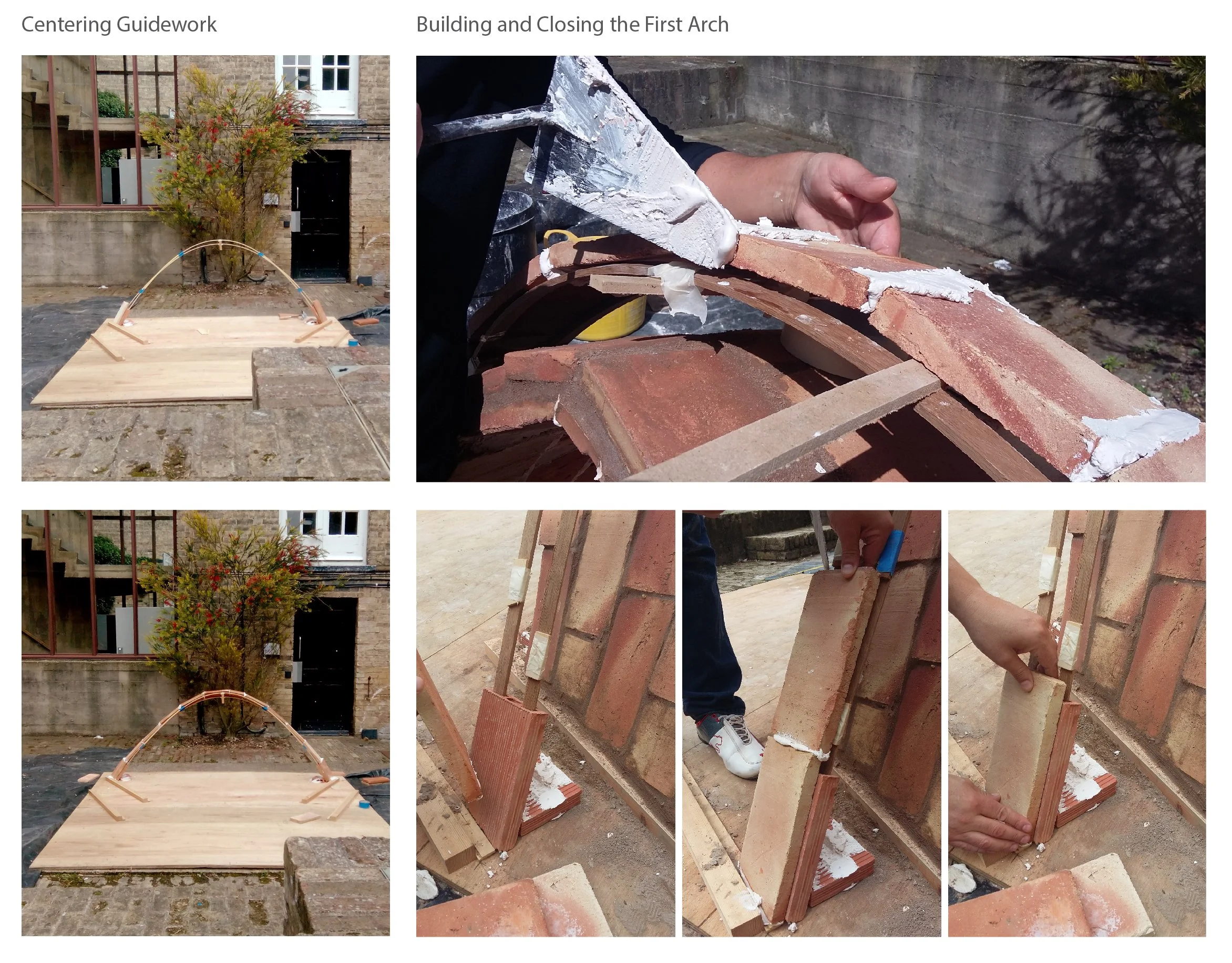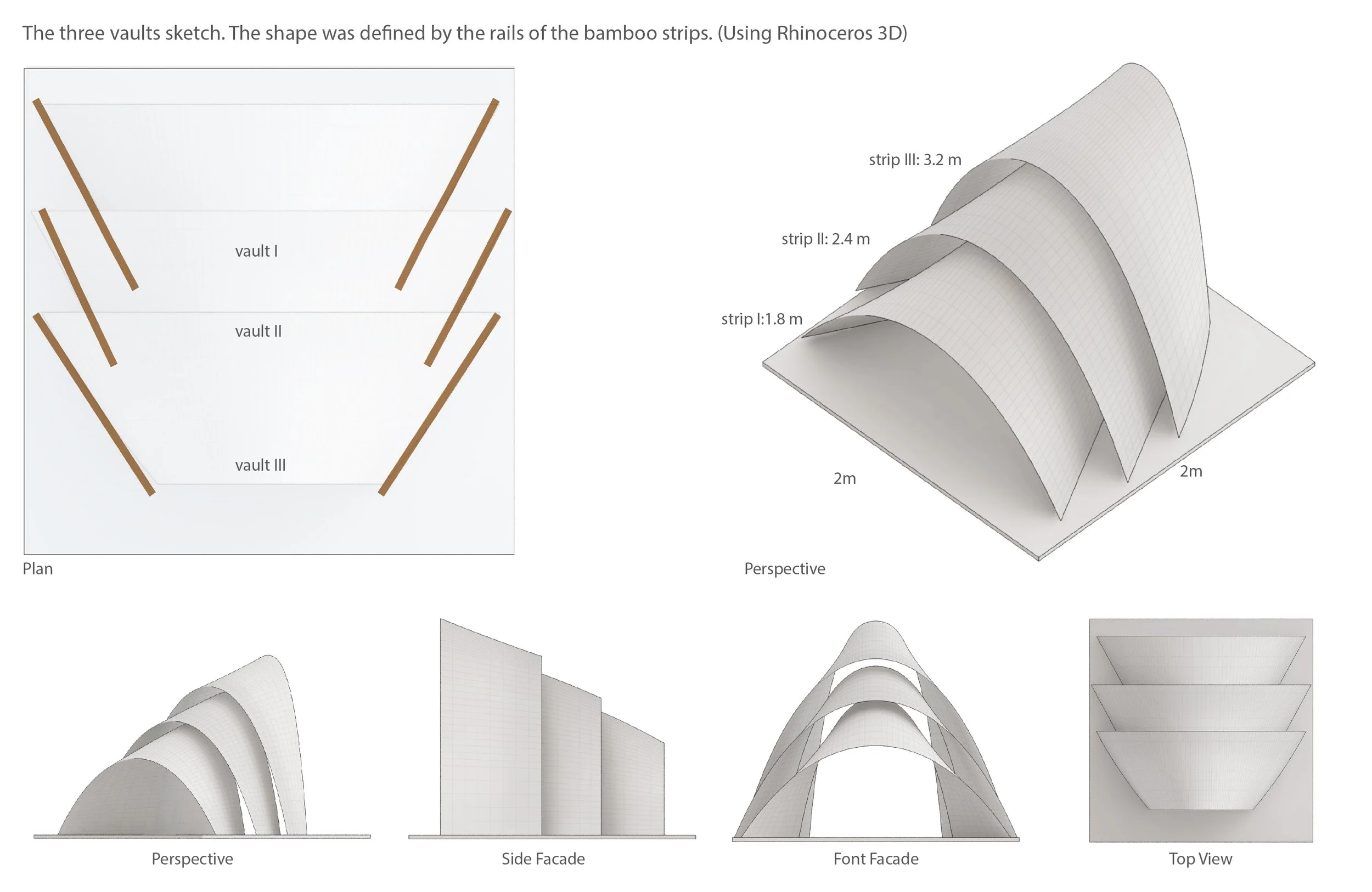The project is part of Wesam's MPhil Project
The Project is awarded the 15th Tile of Spain Annual Award
Thr Project is awarded Morgan Sindall Prize Award on Construciton and Building Practice.
The Vaults were built with Salvado Gomis Aviño
In Situ
More than a Material
The Spanish tiles have more stories than the one of material, the knowledge with which these tiles transform into structures is equally inspiring. However, the craftsmanship dimension in tiled structures is facing serious challenges in the rapid, mechanised and systemised construction of our time. While technology seems to have favoured other types of structures more than thin-tile vaulting ones, it is still an essential asset to find solutions that empower the traditional know-how in building practice. In the sense that such practice is closely related to craftsmanship, technological applications should help, rather than replace, the builder.
Architecture as an act of design is not the main aim of this project. Rather, it seeks structures that result from, and are described by, simple in-situ applications in what can be outlined as self-generated structures. By hypothesising that structures are germane to the inherent properties of their materials, finding simple in-situ solutions for compression based structures becomes the motor of grassroots local construction.
In this particular context, the role of architecture is to mediate between materials, craftsmanship and physics. In the construction of Gaudi's ruled-surfaced vaults, marrying the ruled surface logic with the string guidework system is an obvious example. No robotic arms or heavy machines were used but the everyday tools that vault makers had, i.e. strings. This simple technique was transformed to somewhat unprecedented tool for producing complex geometrical compositions.
Thin-Tile Vaulting
The project focused on the case of thin-tile vaulting, the once prevalent and prospered construction system in Spain. By using technology as an analytic tool, thin-tile vaulting has many possibilities not only in places where materials are scarce but also in places where labour can be expensive. It benefits from technology to present solutions that can best fit their economic and social contexts. Thin-tile vaults are already known for requiring little or no formwork, but the reusability of guidework and formwork to generate multiple and different typologies of vaulting is yet to be explored.
Application
The example case of the project is the case of transitional housing for internally displaced persons in the north of Syria, where, other than the local materials, thin-tile vaulting can be one feasible solution. Not only is necessary to reduce the amount of formwork but also to give more freedom of having several vaults typologies by using the same guidework systems.
Prototype construction
As part of this project, three vaults were built in July 2016 to test the bending bamboo system. The vaults construction examined the ways with which we can minimise the use of formwork or guidework in vaulting, and consequently reduce the use of materials and cost. The bending behaviour was calculated, so the changes in stiffness of the strip obliged the bamboo to bend in a structural shape of a parabolic arch. Eventually, the wasted materials of formwork and guidework where only the tape we use to fix the bamboo strips together, the strips themselves were returned to the material workshop almost as usable as we first took them.








